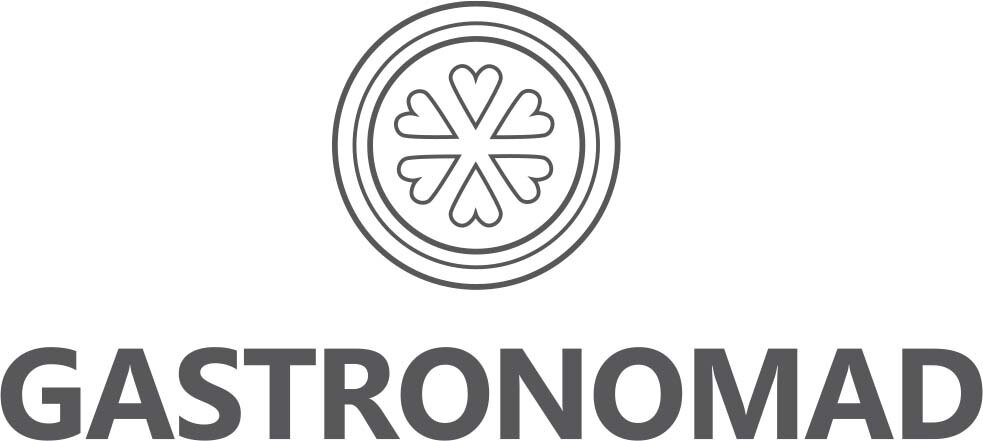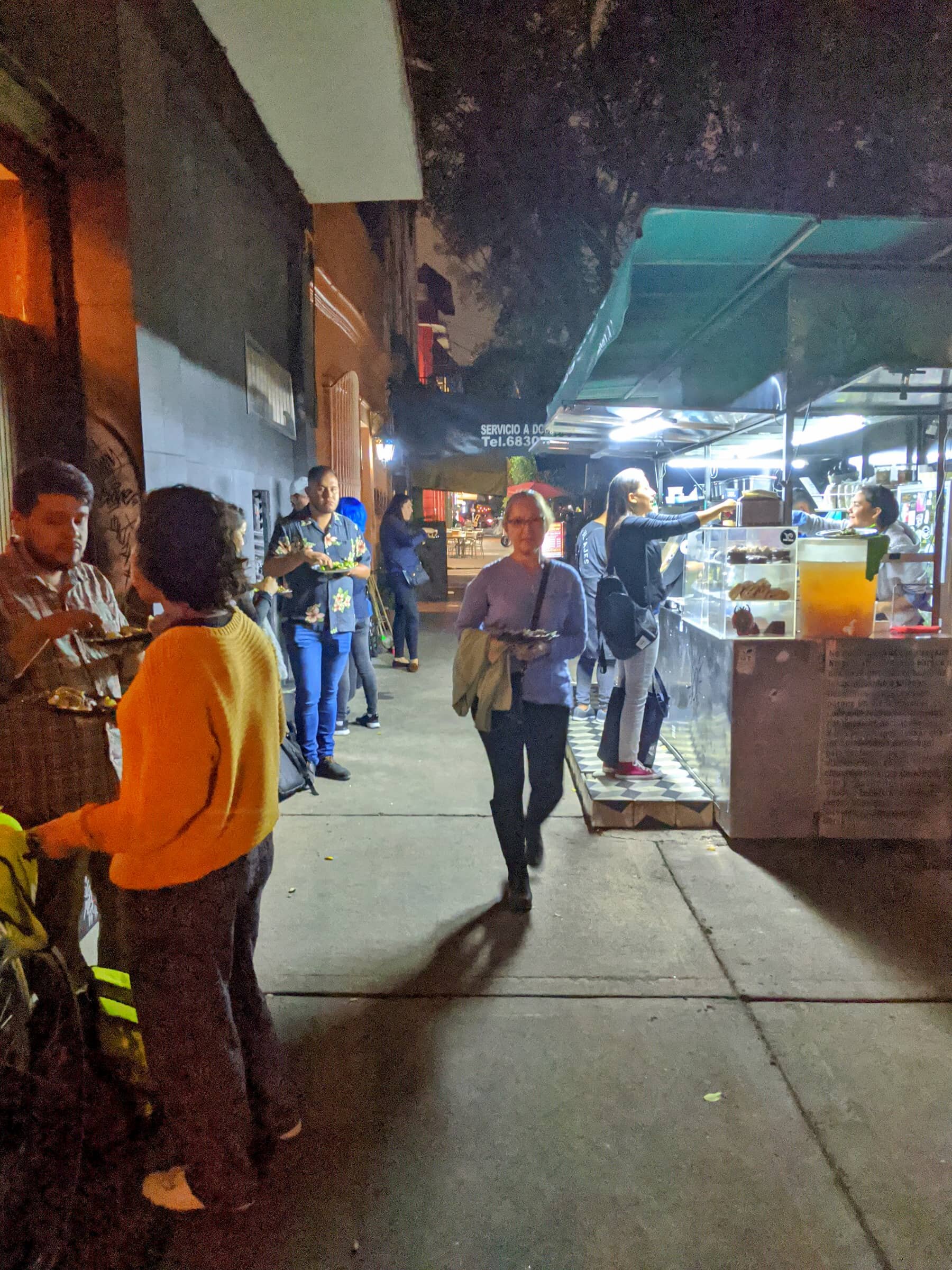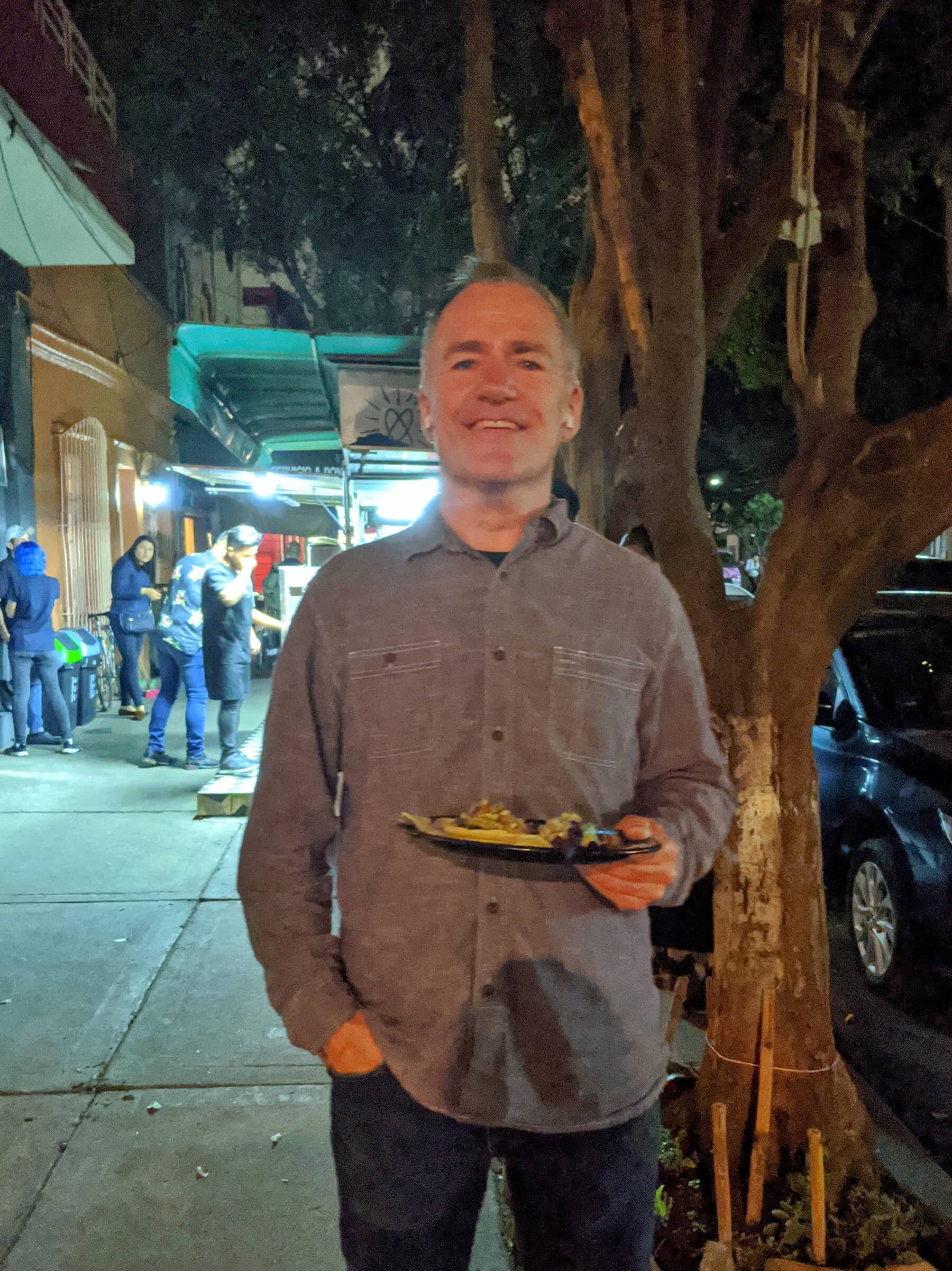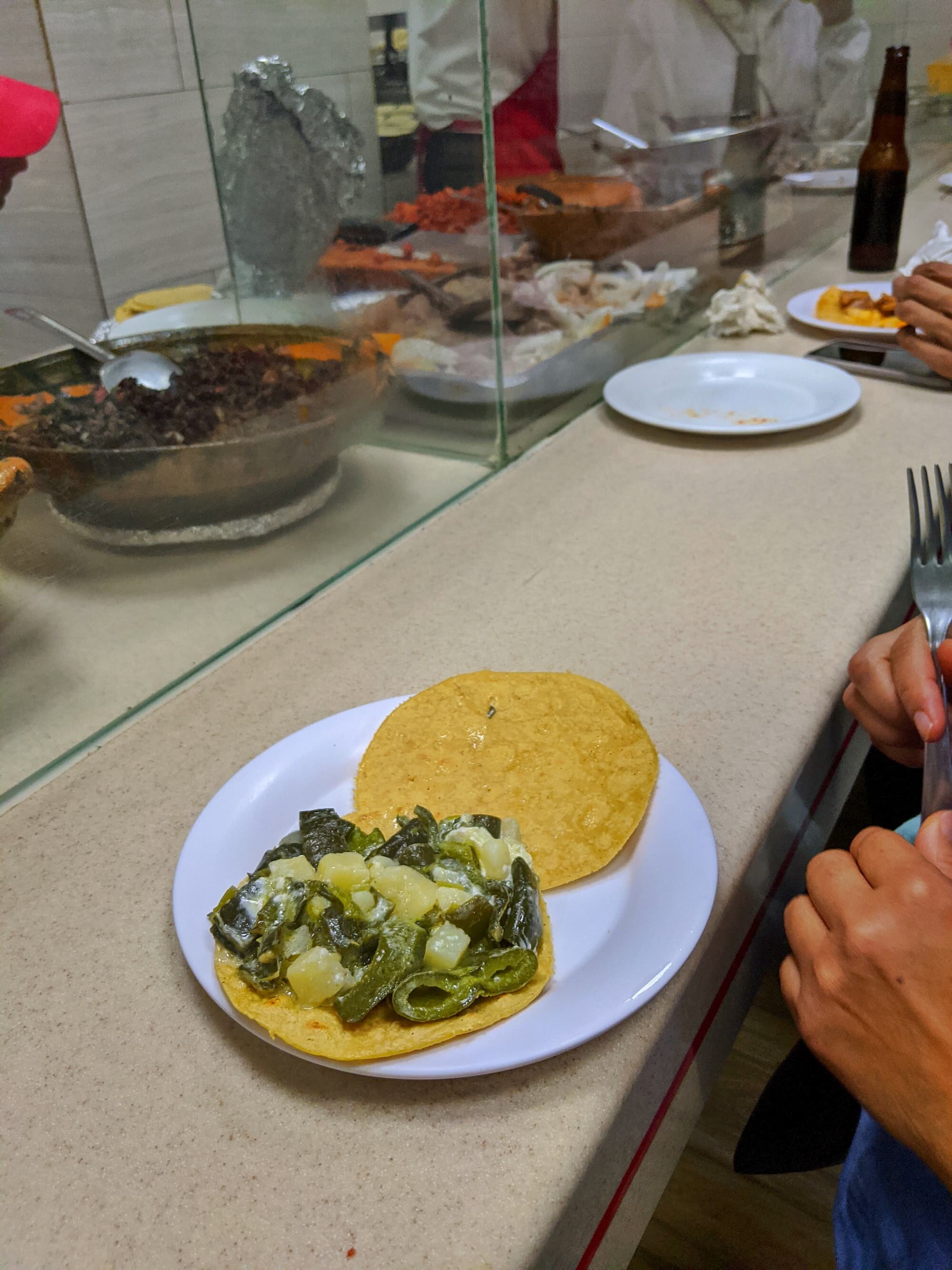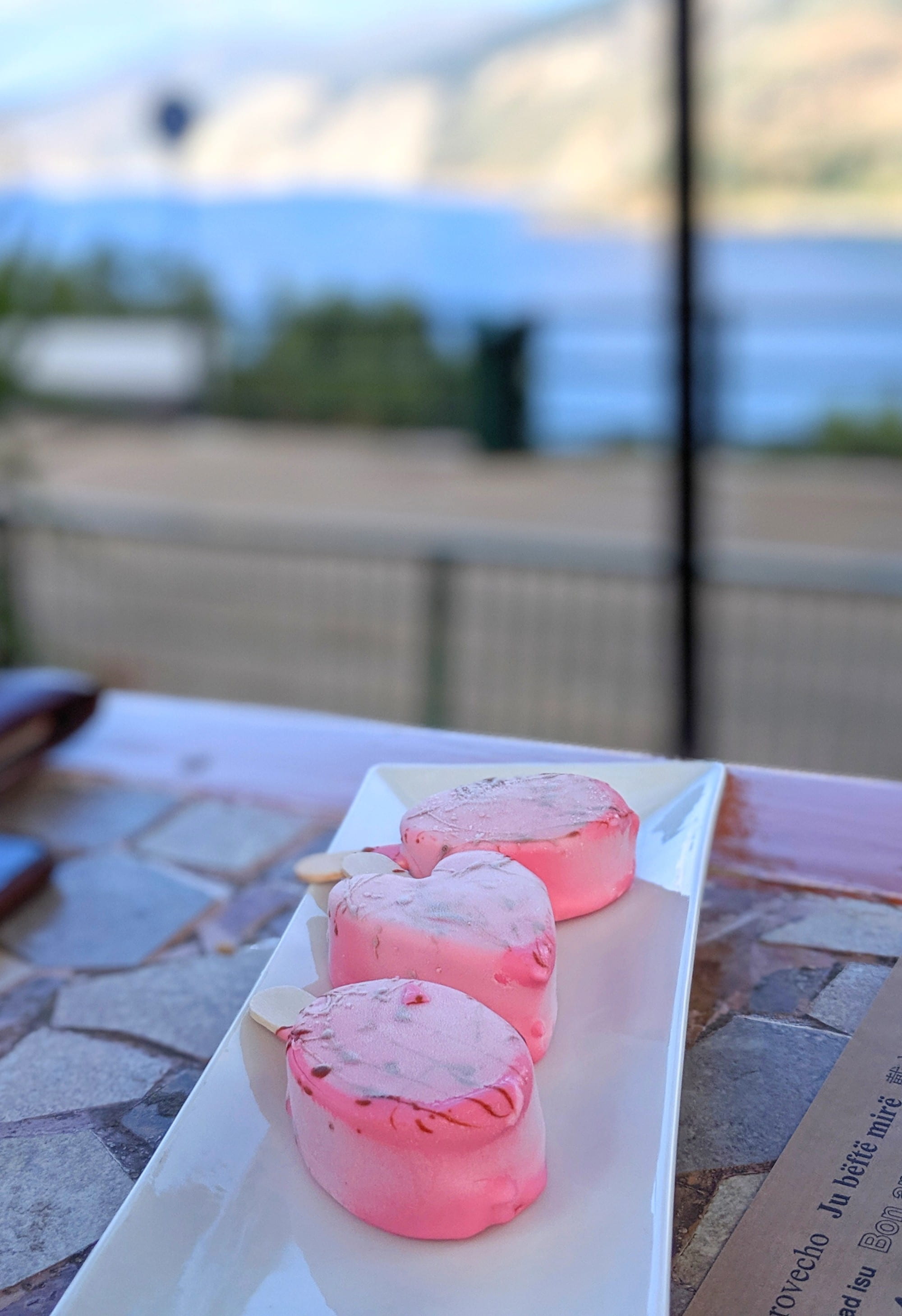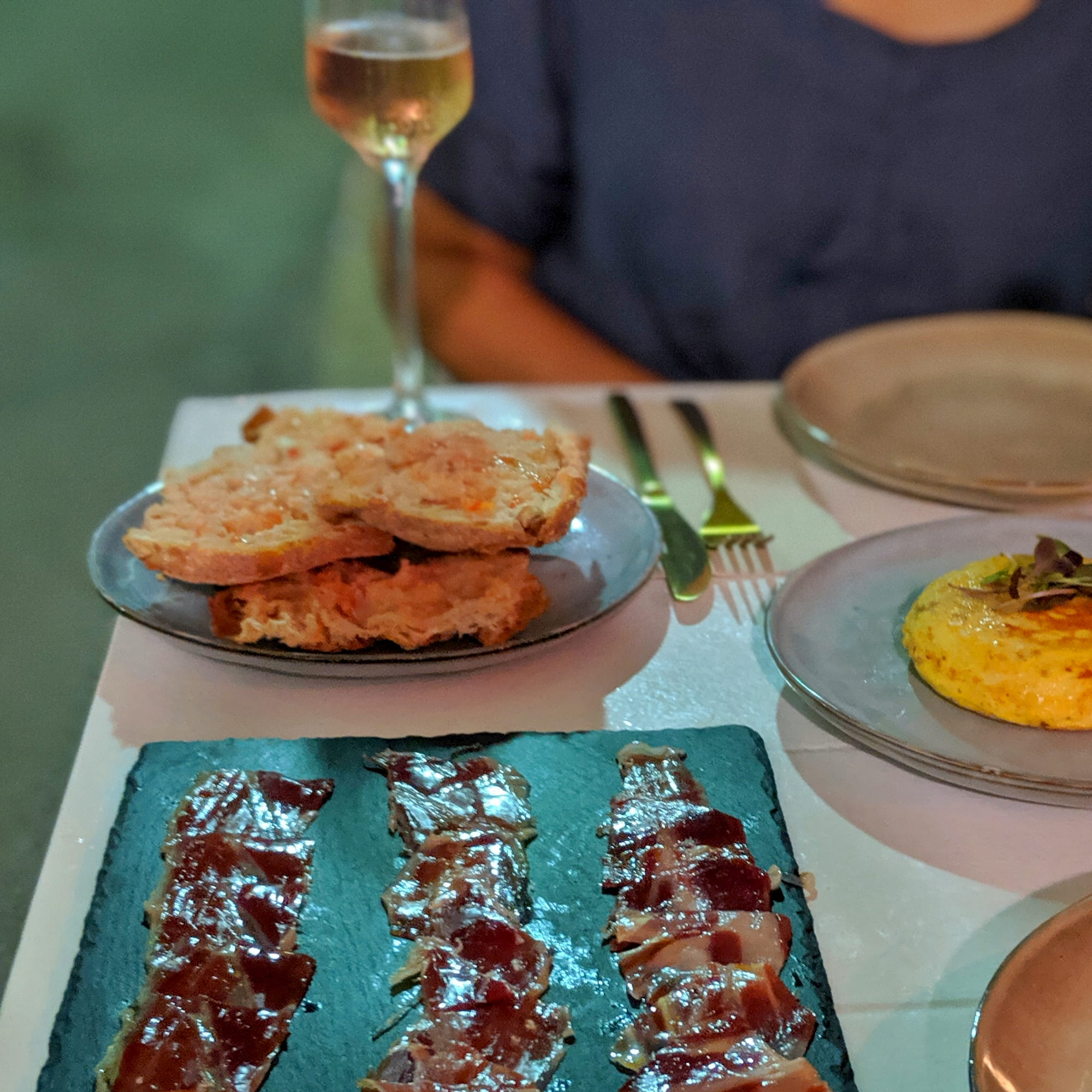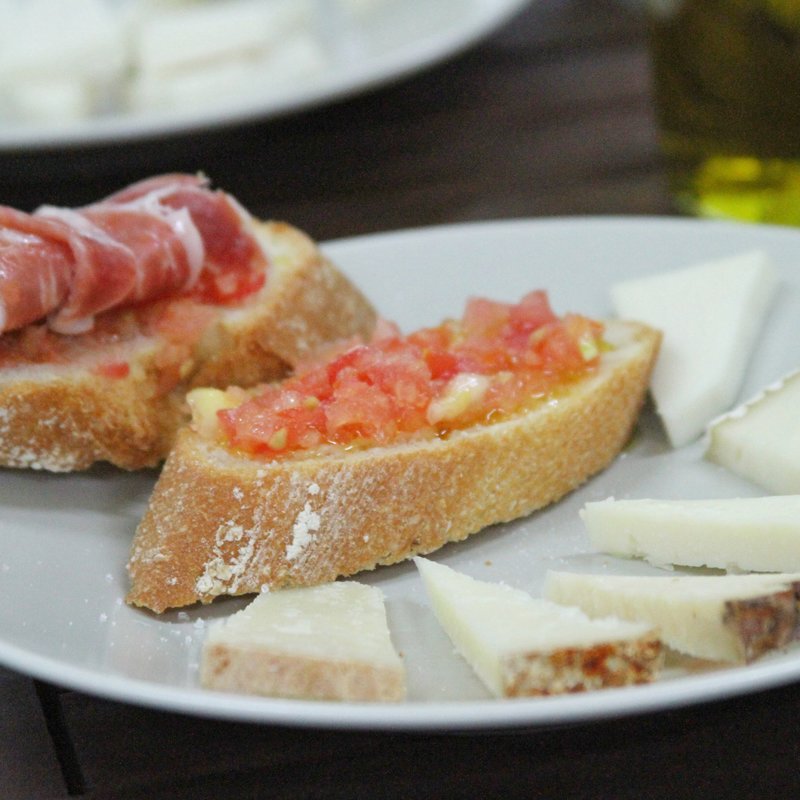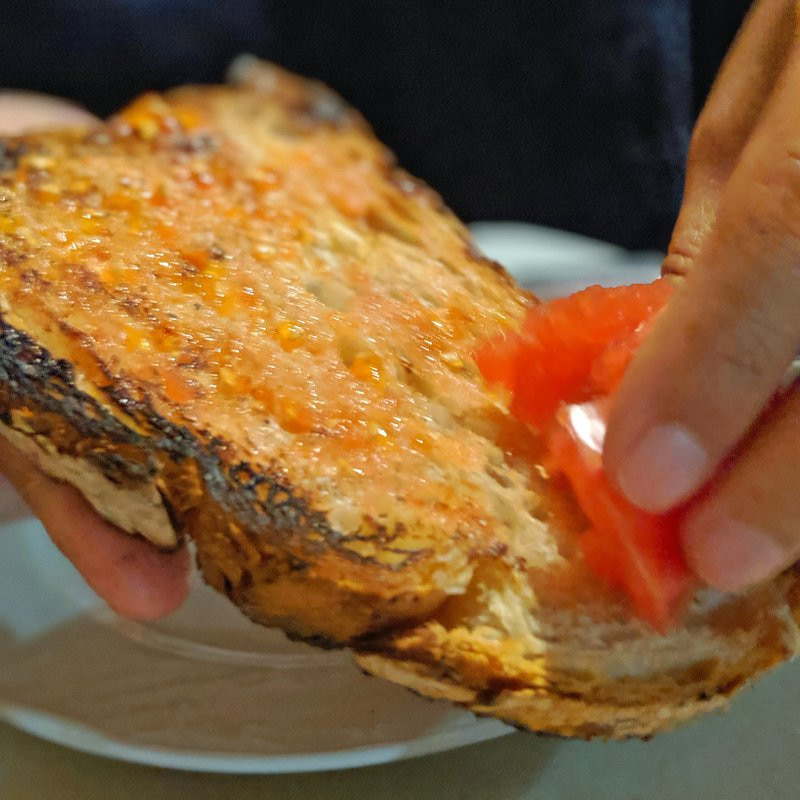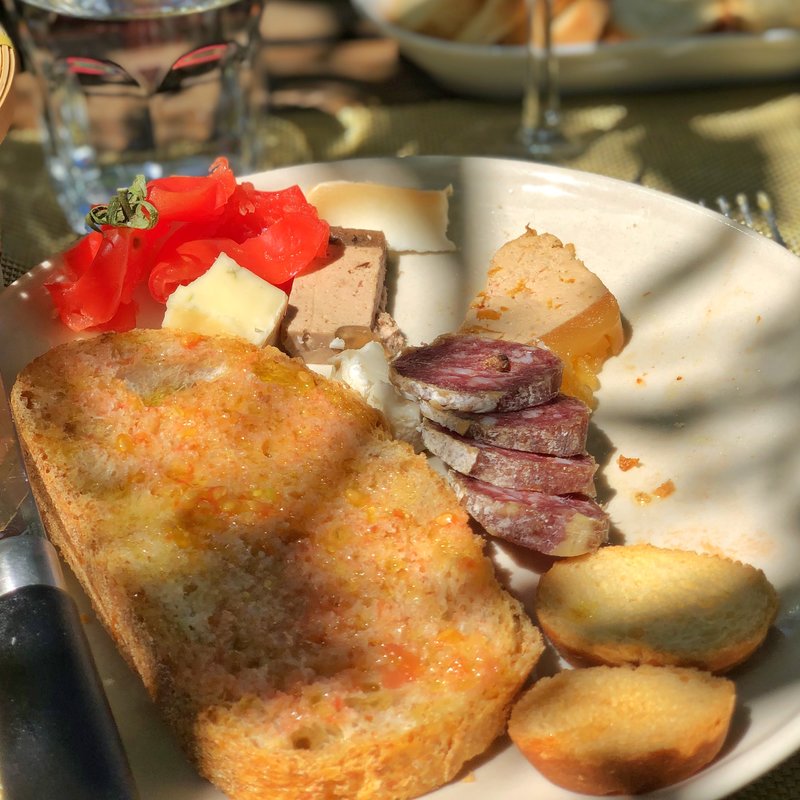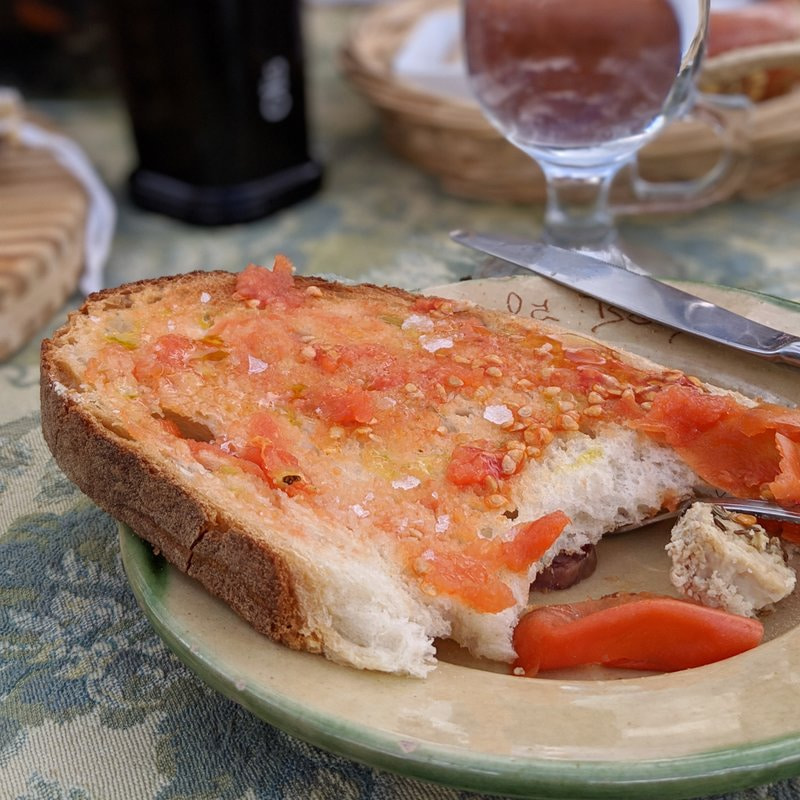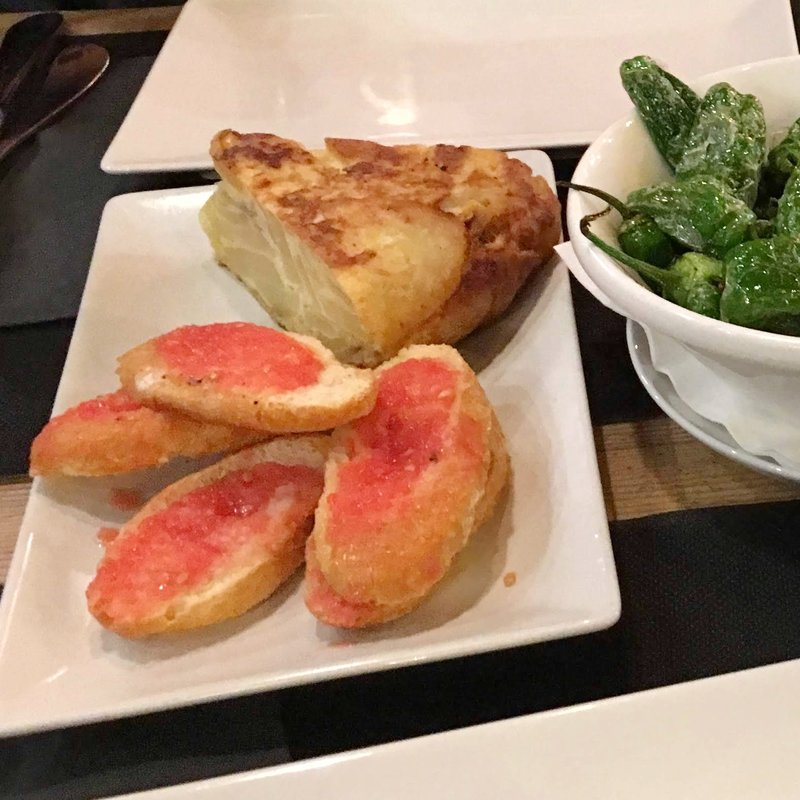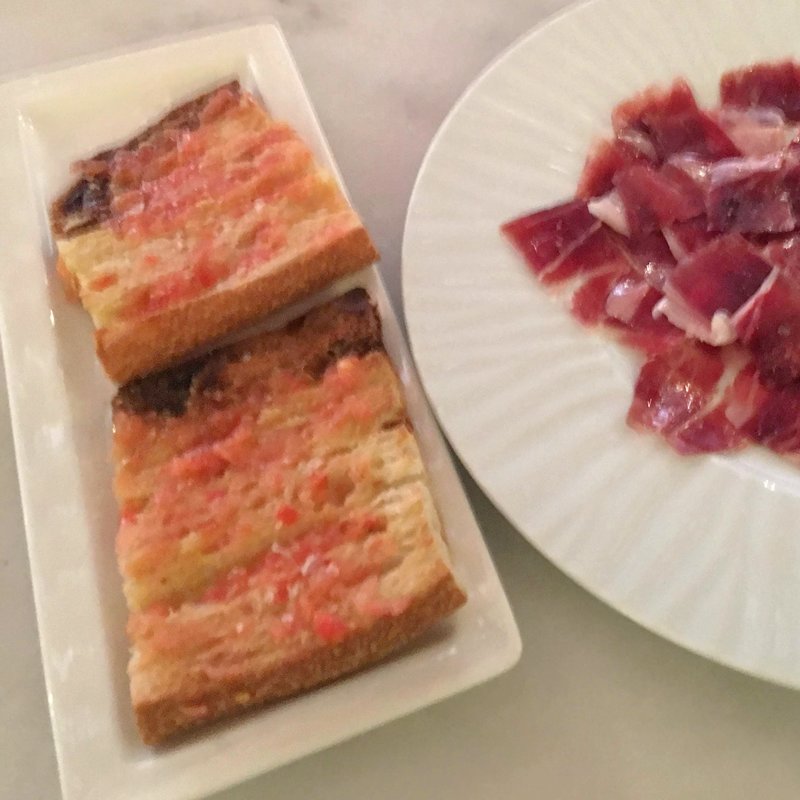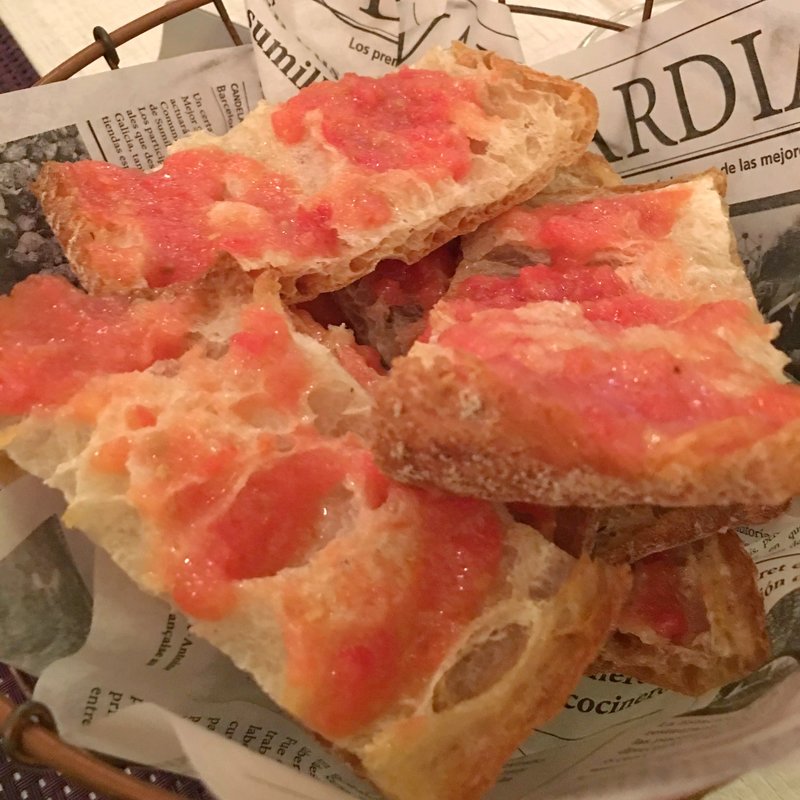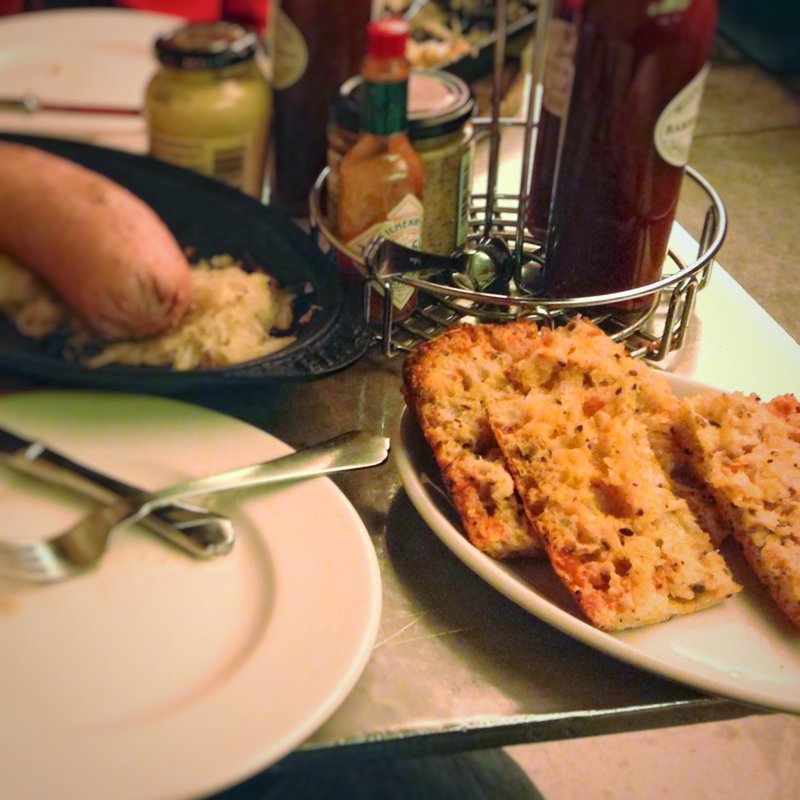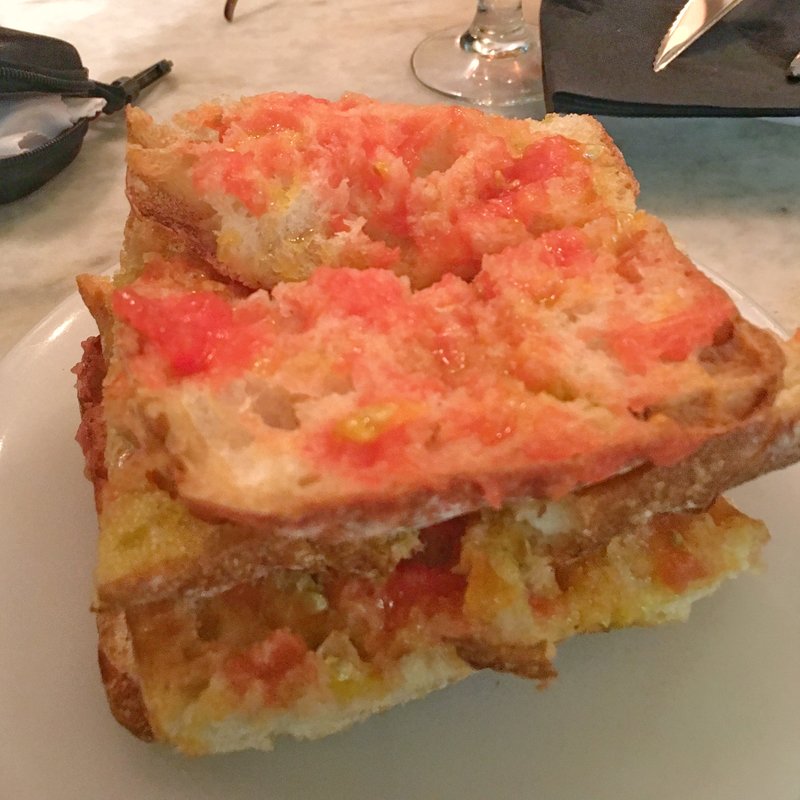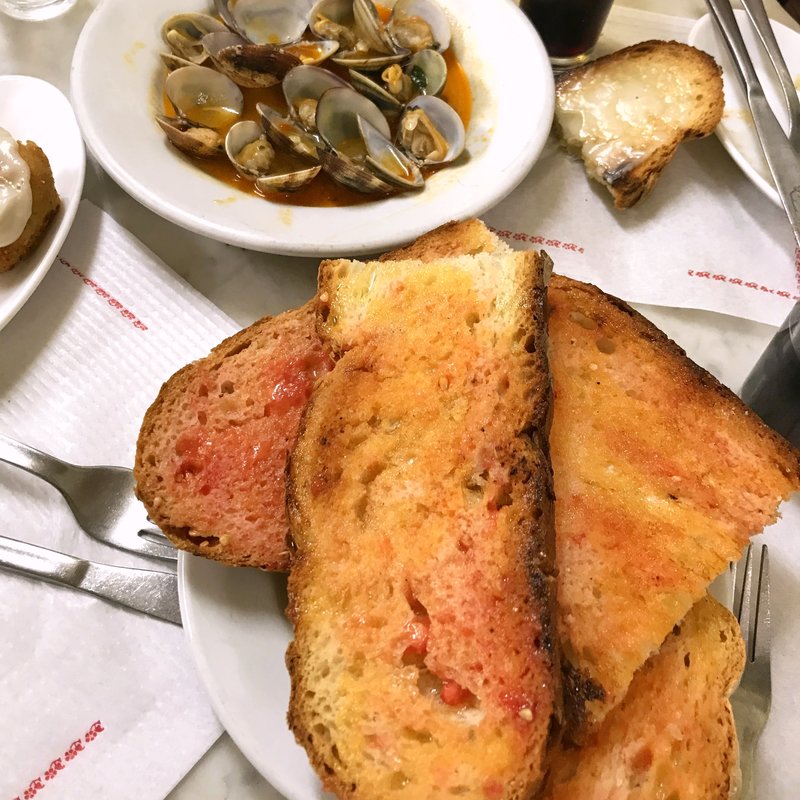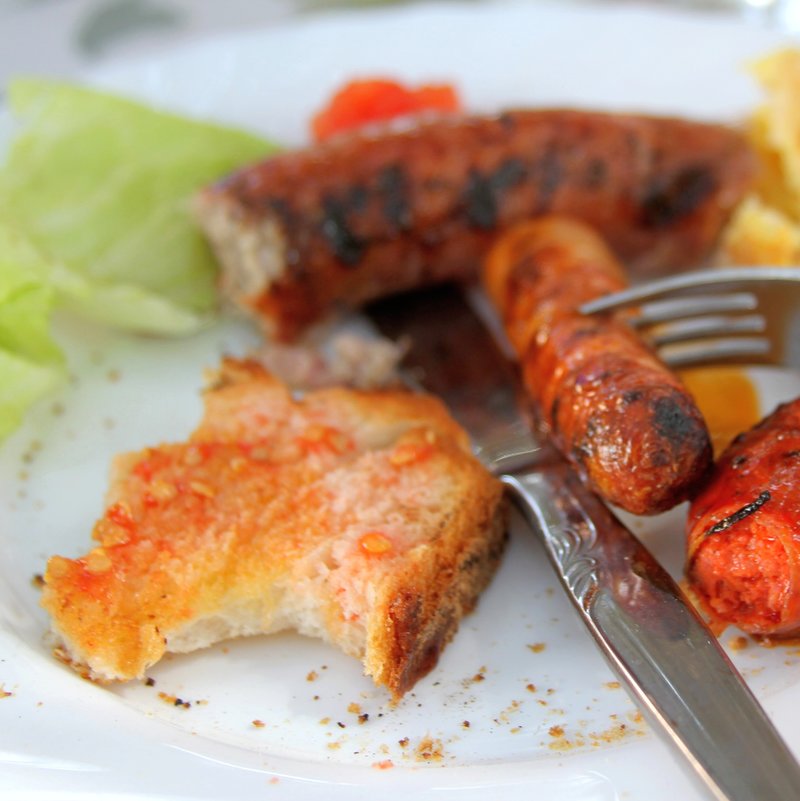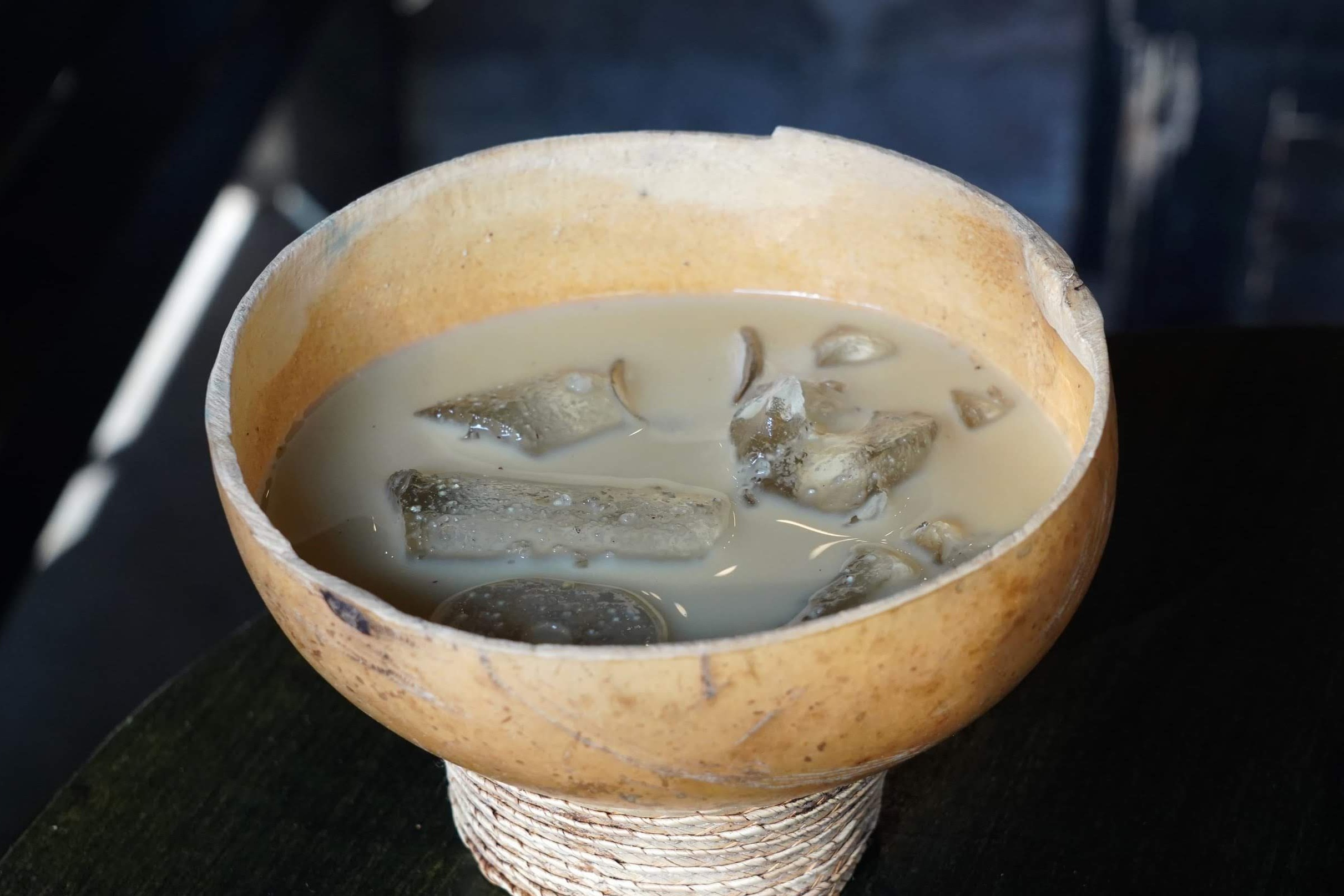Amira and I don’t often eat street food, even in Mexico, but made an exception for these two amazing places. As expected, they were both cheap, delicious and fast. Listen to the Mike Elgan Radio podcast to hear our detailed comments, which we recorded on the streets walking home after eating at these places. (Go to the 28 minute mark to hear just the taco part, and go here to subscribe to the podcast.)
Still happily glowing from The Mexico City Experience
We just concluded our Mexico City Experience Sunday. OMG, what a wonderful and mind-blowing week it was!
Every Experience is different, and this one was unlike any past Mexico City Experience and also unlike any future one.
We began during Día de Muertos and celebrated along with the rest of Mexico City with traditional face painting, ofrenda, Mexican delicacies made on a comal over a wood fire, Mexican chocolate from cacao bean to cup. We enjoyed authentic Mexican fun at our friend’s beautiful house in the San Angel neighborhood of Mexico City. So much fun!
Mexico City astonishes at every turn. The exquisite food, exotic drinks (tomato pulque was just one of many rare beverages that delighted our palates) and incredible tastings of wine from all the wine-making regions of Mexico. Of course, we dove deep during exquisite mezcal and tequila tastings. We got to enjoy some very special bottles not available to the public, which another friend generously made possible.
The funnest part is that we surprise our Gastronomads at every turn. They never know what we're going to do until we're doing it.
It was an extraordinary week filled with profound joy and continuous laughter that nourish my soul and fills my heart with enormous gratitude.
Our local Mexican friends and visionary food artisans are remarkable and inspiring people whom Mike and I love. We are grateful for their passion and friendship. We’re very lucky to have them in our lives.
My favorite quotes of the week from our new friends: “It was beyond expectation,” “life-changing,” and “I will be looking into next year when I get home so you shall hear from me soon.” Music to my ears!
We'll be staying in Mexico City, with a brief trip to Guadalajara, and we'll head back to California for awhile to visit family. Then it's back to Mexico City for the unique December Mexico City Experience. (We still have one room left and, if I'm honest, you'd be nuts to miss it!) -Amira
Having mind-blowingly great tacos right now in Mexico City
This incredible taco from a little-known hipster joint called Chetito in the Roma neighborhood contains shrimp, cheese, avocado, crunchy tortilla strips and spicy sauce of some kind. So delicious. It starts out tasting mild, but by the end your mouth is pleasantly burning.
We discovered a brand-new restaurant in Mexico City
This new restaurant in Mexico City is pushing the envelope with ingredient innovation and also preserving ancient Mexican (mostly Oaxacan) traditions. You can hear all about it — and our interview with the chef — by listening to the Mike Elgan Radio podcast below, or subscribing here.
Kefalonia dreamin'
Waking up to the sound of rain and light thunder after our first night in Kefalonia was wonderfully relaxing. (We got to turn off our fake rain sound app for a change). And the rest of the week we had nothing but perfect warm weather with blue skies and white puffy clouds.
Kefalonia airport is pretty old-school -- tiny and quaint, with one tiny baggage claim belt. It really feels like it’s from another era. Right after our flight landed, Tony, Mike and I walked on the tarmac to the small arrival area. We collected our suitcases and headed a few steps to the exit where we were greeted by our AirBnB host, who graciously offered to pick us up. He gave us a quick tour of the center of the island's main town of Argostoli, and we all instantly fell in love with the island.
We booked a cheap flight to Kefalonia and the lodging just one day before. Having no idea what awaited us before we boarded our flight, we were pleasantly surprised to discover the magnificent beauty of the island from the sky as the flight descended with the sun setting. Our propeller engine plane landed and it felt like we had landed on Fantasy Island.
Discovering this delightful island was purely by chance -- serendipity at its finest.
After dropping off our suitcases at the nice three-bedroom house we rented, we headed for a walk to check out the town. There are many restaurants, bars and taverns along the shore with breathtaking views.
We played "restaurant roulette" (where you order one item, order more if it's good and go to another restaurant if it's not) and ate at two restaurants the first night. The food was delicious.
We’ve been trying other restaurants every day and, with the exception of one, all have served us good food. There are also wineries on the island specializing on a local varietal called robola. And, of course, many beautiful beaches and hidden coves with spectacular scenery.
Kefalonia is still a fairly undiscovered island in the Ionian sea. I suspect it will become a more well-known destination soon, as a new airport is being built right next door to the current one.
Even in late September, the weather was still warm with some humidity and a gentle breeze. It all felt glorious. Mike enjoyed swimming in the warm mediterranean water. And we even enjoyed these amazing house-made strawberry ice cream popsicles.
So if you visit Greece, don't miss out on Kefalonia, an under-rated gem of an island.
Three restaurants in Crete we loved
Peskeci is in Heraklion. It’s a farm-to-table restaurant (they have their own farm). The food was quite good based on very high-quality ingredients. Their bread could be better but I was happy it was served with organic olive oil from their farm.
Domenico is a small tavern owned and run by our new friend George who goes by the nickname of Smoothie. He’s is smooth indeed. His charming personality and the simple but well-prepared dishes made by his wife are definitely worth the visit. The food was fresh and delicious. And the desserts were good. I especially enjoyed the homemade ice cream made with sheep milk.
We also enjoyed a delightful lunch at a restaurant right on the beach, called Dolphin. To our delight, the food was great and, of course, it was fabulous sitting at a table on the beach enjoying stunning views of the Mediterranean with the hill perched town in the background.
Eating great baklava in Athens
I ate nearly all of this delicious baklava today in the Monastiraki district of Athens, along with a double Greek coffee. So delicious.
A love letter to "pan con tomate"
Bread rubbed with a half tomato, drizzled with olive oil and topped with salt.
So simple. So healthy. So delicious. And so Catalonian.
It's called "pan con tomate" (that's "pa amb tomàquet" in Catalan and "bread with tomato" in English).
We eat it almost every day when we're in Barcelona or the Catalonian countryside. It's the first thing we order in Spanish restaurants -- before we even look at the menu or wine list. And it’s a staple of our Barcelona Experience.
"Pan con tomate" is very similar or even identical in ingredients to the Italian antipasto bruschetta. The difference is one of tone and feel. While Bruschetta is typically prepared in a kitchen and served occasionally, "pan con tomate" is far more casual and everyday, usually prepared at the table by the person eating it.
Bruschetta is harder to eat, because a large quantity of diced tomatoes tend to be precariously perched on top of narrow slices of bread. I often lose a few cubes of tomato when I eat bruschetta.
"Pan con tomate" is easier to eat, because the ingredients are kind of mashed into and drizzled onto what is usually a larger slice of bread, rather than heaped on top.
And Catalonians eat "pan con tomate" far more often than Italians eat bruschetta. For example, in Catalonia, "pan con tomate" is happily consumed for breakfast, lunch and/or dinner.
Both "pan con tomate" and bruschetta almost certainly emerged sometime in the 17th or early 18th century after Europeans started incorporating Mexican tomatoes into their diets. (The Europeans got domesticated tomatoes from the Aztecs, who got it from the Mayans, who got it from pre-historic South Americans.) The first written recipe for "pan con tomate" that we know of was published in 1884. The use of toasted bread with garlic and olive oil in Europe no doubt pre-dates the Romans -- the Spanish and Italians just started adding tomato to something they were already eating.
The standard way to eat "pan con tomate" is to use a kind of baguette-shaped bread, sliced and brought to the table with whole tomatoes, olive oil and salt. You slice a tomato in half, then rub it on the bread or toast while squeezing it a bit. Then you drizzle olive oil on top and sprinkle salt.
The best way to make "pan con tomate" (i.e. the way Amira makes it) is to use ancient-grain, naturally leavened bread toasted over a wood fire, rubbed with tomato and drizzled with a pressed-garlic infused olive oil and topped with seasalt.
Garlic is a common but not necessary ingredient in Catalonian "pan con tomate," where it is rubbed on the bread before the tomato either in raw or roasted form.
The whole point of "pan con tomate" is extreme compatibility with Catalonian life. It uses ingredients always on hand. And it's a way to avoid wasting old bread. You can easily compensate for the dryness of the bread with the amount of tomato and olive oil you put on.
"Pan con tomate" is super flexible. You can put cheese on top, or -- my favorite -- jamón ibérico. You can and should eat it with tortilla, which is what Spaniards call a potato omelette ("tortilla española" or "tortilla de patatas").
In fact, "pan con tomate" pairs perfectly with all the Catalonian things -- cava, ham, cheese, stews, seafood, sausages and more. It's Catalonian, of course, but also gloriously Mediterranean.
I love bread. And I'm very gluten tolerant. But "pan con tomate" is easily the healthiest way to eat bread. The tomatoes, garlic and olive oil are extremely good for you.
And "pan con tomate" is charming, too, because it highlights and showcases the work of the farmer -- the quality of the tomatoes and olive oil, plus the quality of the bread, dictate the quality of the "pan con tomate."
In my experience, "pan con tomate" tastes best with family and friends in the shade of an olive tree or grape vines on a breezy late-summer afternoon while gazing across Xare-lo vineyards with Montserrat on the horizon. But it's also delicious everywhere you can get your hands on good bread, tomatoes and olive oil.
You should eat "pan con tomate." -Mike
Tasting French cheese in Spain
We enjoyed this incredible Valençay cheese during The Barcelona Experience, which ended yesterday. It was one of 20 cheese we tasted during this tasting, which itself was one of several cheese tastings.
Wait, you say, isn't that a French cheese?
The answer is: yes. Catalona, which borders France, is one of the best places in Spain to find French cheese. (We also tasted lots of Spanish cheeses, and a few other French and Swiss cheeses.) Valençay is from the Loire Valley.
Valençay is made from raw goat milk, and is covered with grey ash.
It looks like a very strong cheese, but it's surprisingly mild. I think this is my favorite cheese in the world right now.
Cheese with a view of the Barcelona Cathedral
We spent a couple days eating our way through Barcelona. We love these rooftop bars, because Barcelona looks so amazing from up high.
My office today: the balcony of our rental in Spain
After around 22 hours of travel (San Jose to Phoenix, Phoenix to London, London to Barcelona, then a drive to here) we finally arrived at the place we’re renting for a month, which is about an hour’s drive West of Barcelona. We’ll live here while we prepare for the upcoming Cava Barcelona Experience!
Hey, L.A. Times, stop putting rice in your horchata!
The L.A. Times food section wrote a fun but misleading fluff piece about horchata under the headline "Stop putting dairy in your horchata."
Cooking Columnist Ben Mims observed that most of the horchata available in L.A. contains dairy -- often canned evaporated milk.
By milk-shaming horchata, Mims implies that the historic and ongoing evolution of horchata, innovation should have stopped with the Mexican innovation of basing it on rice, rather than tiger nut.
He focuses somewhat chauvinistically on the false idea that Mexico is somehow the epicenter and therefore arbiter of global and historic horchata, and mentions in passing that other places happen to have their deviant varieties -- for example, (with false equivalence) he says, the Spanish make horchata from tiger nut and Salvadorans make it using morro, sesame seeds and pumpkin seeds. And he points to rice-based but flavored regional Mexican varieties, some of which use condensed milk.
Mims also disparages the addition of milk as a kind of cheat, a lazy way to achieve creaminess in rice-based horchata.
But this perspective is misleading.
The truth is that horchata has a long history, and every culture that embrace it made it their own.
Horchata began as a drink made from a weed in Africa and the Americas. The plant is called cyperus esculentusk by the scientists, and colloquially chufa sedge, chufa nut, nut grass, yellow nutsedge, tiger nut sedge, tiger nut, edible galingale, water grass or earth almond.
Plants in the tiger nut family were used as a food source by Native Americans, Africans and others at least 9,000 years ago. But where did the orchata Mims is drinking in L.A. come from?
Americans got horchata from Mexico.
Mexico got it from Spain.
Spain got it from Valencia.
Valencia got it from North African Muslims (the "Moors").
The “Moors” got it from Egypt.
The Egyptians got it from sub-Saharan Africans.
They still drink it in West Africa, where it's usually known as kunnu aya.
(Our word "horchata" comes from the Valencian word "orxata." Because of New World bastardizations, the Valencians now call it "horchata de chufa" to differentiate the newer innovations.)
Everybody changed it. The Moors or Valencians probably added sugar and cinnamon to the tiger nut drink.
Mexicans and Central Americans made it without tiger nut (opting instead for rice, morrow and other ingredients).
Various countries like Puerto Rico and Venezuela added sesame seeds.
Ecuador makes pink horchata using flowers and herbs.
And both Mexicans and Americans started adding milk and other ingredients and flavorings.
Of all the changes made to this African drink by Europeans and Americans, by far the biggest "bastardization" wasn't the milk, but the rice.
In fact, it's reasonable to suggest that any drink not containing tiger nut isn't even horchata, but something else entirely that is erroneously called horchata.
Regardless of nomenclature, horchata's journey is just like any other food's journey, traveling across geography, time and culture and evolving as it goes.
For the record, we've tasted horchata all over America, Mexico, Central America and Spain -- especially in Valencia -- and our favorite is Salvadoran horchata made with morro, which is flavored with cinnamon, nutmeg, coriander seeds and allspice. But we also try Mexico City’s best rice-based horchata (pictured) during our Mexico City Experience.
Either you believe that horchata is by definition made with tiger nut, or you believe that a drink called horchata can be made with any crazy thing, including milk.
The idea that "proper" horchata is made with rice but that the addition of milk is illegitimate is just ignorant and misleading.
Please try harder, L.A. Times.
New Gastronomad store on Amazon!
People are always asking us what luggage, electronics, camera and miscellaneous we use. We’ve been nomadic for 13 years, and live out of two backpacks. Everything we own is carefully chosen for durability, functionality and usability. So check out the new store on Amazon, where you can buy everything we recommend. (Note that as an Amazon Associate I earn from qualifying purchases.)
Wine tasting in Barcelona
This photo was taken at a natural-wine tasting for sommeliers in Barcelona during our first Barcelona Experience. The tasting was a wonderful event with cool people at an amazing venue in the city.
We love wine tasting, and we're planning some fun and surprising wine tasting in Barcelona and the nearby cava county (they make a lot more than cava!) at the upcoming Cava Barcelona Experience, which is now only one month away!!
Our favorite country is wine country
Wherever we go in this world, we always seek out the places where the small, old wineries and vineyards are.
Wine countries, whether they're in Europe, Asia, Australia or the Americas, are always beautiful, and they also tend to have great food.
Because wine is big business, agri-giants are growing grapes on vast, industrial vineyards where grapes really shouldn't be grown. You see them springing up in California in the Central Valley, and in the vast agricultural space between the Napa/Sonoma wine country and the Santa Barbara/Santa Ynez wine country. Not beautiful.
But in the places where vineyards are small, and exist among with homes, small towns and other kinds of agriculture, they're always beautiful.
(This vineyard happens to be on the Prosecco Road north of Venice in Italy, where we do our Prosecco Experience. )
How to eat truffles
My favorite way is: mild French cheese, freshly shaved truffle, extra-virgin olive oil, sea salt, plop it in your mouth, repeat.
During our Provence Experience, we try fresh truffles every which way: truffle pizza, truffle on soup, truffle and farmer's cheese on toast, truffle on pastries -- we even put truffle oil on our truffles.
Looking forward to a Venetian Autumn
They make prosecco out of grapes that can tolerate, and in fact need, extreme weather conditions. Glera grapes love South-facing and steep slopes, very strong wind, near freezing temperatures in the Winter and heat in the summer. It's always beautiful in the Prosecco Hills, but the region gets real weather.
Autumn in Veneto, however, is extremely pleasant and beautiful -- especially so because it's a rare spot in Italy where the food, wine and scenery are magnificent, but the tourists haven't discovered it yet. (Or maybe the tour busses can't handle the narrow, winding lanes and steep hills.)
Yes, Venice itself is the poster child for overtourism. But the rest of Veneto is largely undiscovered by the Instagram set. That's one of the hundred reasons why we love hosting our Prosecco Experience.
Making traditional couscous on a farm in Morocco
Couscous is one of the many culinary gifts of the Berbers. It's tiny balls of crushed durum wheat semolina traditionally cooked with the steam of the meat and veggies that it will be served with. Commonly made on Friday, you eat it communally, with everyone digging with a spoon into a huge plate of couscous in the middle of the table. It's delicious with a little buttermilk, which you pour on the portion you're eating from.
(During our Morocco Gastronomad Experience, we make couscous traditionally and from scratch, and enjoy different regional varieties as we caravan across Morocco.)
Could this be the perfect travel coffee kit?
A company called Pakt has successfully Kickstarted and will soon go into production with a product called the Pakt Coffee Kit. This looks to me like the perfect travel coffee product.
Open the case and pull out the cylindrical kettle, which sits on a plugged-in base like a regular electric tea kettle. Inside the kettle is nested two containers, one that serves as a giant coffee cup, and another that holds your coffee beans or coffee grounds.
A pour-over cone expends out with a clever design, so that when it’s collapsed, it fits inside. This is made of metal, rather than silicon or some other material usually used with collapsible food and coffee products.
The Pakt Coffee Kit is scheduled to ship by the end of the year for $189.
Why Barcelona is my favorite place to drink vermouth
Good vermouth is a delicious, refreshing and delightful beverage that's misunderstood, abused and maligned. The drink is also associated with Italy, or maybe France. But I think that in the last few years, Barcelona, Spain, is the best city to drink vermouth. (And, of course, we'll be drinking Barcelona's very best vermouth during our Cava Barcelona Gastronomad Experience.)
I'll tell you why in a minute. But first, let's talk about vermouth itself.
Vermouth is a fortified white wine flavored with botanicals. The "fortification" involves the addition of alcohol (brandy or neutral spirits) to bring the level to at least 14.5% in Europe or 15% in the US. (By definition, vermouth is at least 75% wine.)
The name "vermouth" comes from the French pronunciation of the German word for wormwood (wermut) -- and wormwood is one of the few universal ingredients in good vermouth.
Fortified, botanical wines have existed in China for millennia and Europe for centuries, mostly as a medicine. But Vermouth as we know it today was invented in mid-18th century Turin, Italy. That Italian invention was a red vermouth. Later, white and dry vermouth was developed in France.
Vermouth can be sweet or dry -- or, more recently, extra-dry white, sweet white, red, amber, and rosé.
Vermouth is used as an ingredient in cocktails, of course. That's the American way. Before World War II, more than half the cocktails commonly quaffed in America contained vermouth as an ingredient. And Americans even drank it neat. But the war stopped imports of vermouth from Italy and France, and Americans lost touch with it.
It's still a necessary ingredient in the quintessentially American cocktail: the martini. Interestingly, the original martini used sweet vermouth, but over time a dry martini with dry vermouth became the preferred martini. Use of the term "dry martini" gradually changed from meaning "dry vermouth instead of sweet" to meaning "a lesser amount of dry vermouth instead of the normal amount of dry vermouth.")
Cocktail books list more than 200 cocktails containing vermouth, mostly dry vermouth. As a result, most Americans think of vermouth as a cocktail mixer exclusively.
Many people think they don't like vermouth, but only because they've never tried the good stuff. They've been exposed only to the mass-market industrial brands, or they've tried old vermouth in the back of someone's liquor cabinet or sitting with the spirits at a bar (which destroys it) -- or both.
Once you open a bottle of vermouth, the clock is ticking, and should be refrigerated, and also consumed within a month or two. (Vermouth is commonly ruined because people believe it to be -- and handle it as -- a spirit. In fact, it's white wine and should be treated as such -- drunk cold and young and soon after opening.)
Vermouth is normally made with Clairette blanche, Piquepoul, Bianchetta Trevigiana, Catarratto or Trebbiano grape varieties. Non-white vermouths are also usually made with white wine, but colored by caramelized sugar.
The taste of vermouth is dominated by the proprietary blend of botanicals and other ingredients used by the maker, which may include wormwood, cloves, cinnamon, quinine, citrus peel, cardamom, nutmeg, marjoram, chamomile, coriander, mugwort, sagebrush, juniper, lavender, holly thistle, hyssop, gentian, ginger, black elder, anise, iris root, apple brandy, honey, cinchona bark, sweet flag, licorice root, cascarilla, angelica root, lemon peel, lime peel, bitter orange, bergamot orange peel, pomelo peel, oregano, dittany of Crete, gallic rose, st. john’s wort, honeysuckle flower, kieffer lime leaves, sage, star anise, cinnamon bark, cardamom, tonka bean, vanilla, allspice and many other ingredients.
While vermouth "manufacturing" happens predominantly in Italy and France, the vermouth "revival" is happening strongest in Barcelona. Spanish vermouth tends to be less bitter and taste sweeter, even though it also tends to have less sugar.
Personally, I think Barcelona is the greatest city in the world for enjoying vermouth. Every neighborhood seems to have a vermouth bar -- some of which are old and fancy; others are literally two stools on the sidewalk. Many serve their own house-made vermouth from a tap, and it's often cheap, as little as 2 Euros per glass, which comes with snacks, such as potato chips, olives, anchovies, shellfish or pan con tomate.
The Spanish way to drink vermouth is neat or on the rocks with an olive, a slice of orange or lemon and, perhaps, a splash of soda, before lunch, before dinner or after church on Sunday (many Spaniards have stopped going to church but continued the Sunday vermouth tradition). Vermouth is usually consumed as a very social "first drink of the day." The pre-dinner vermouth session can last two hours and signals the end of the day and the beginning of the evening.
And it's this ritual, combined with the enthusiastic house-made vermouth renaissance in Barcelona, that makes the city so great for vermouth. To drink vermouth at the right time in the right place is to join the locals in an extremely enjoyable ritual.
I'm really looking forward to sharing my favorite vermouths and vermouth bars during our Cava Barcelona Gastronomad Experience!
